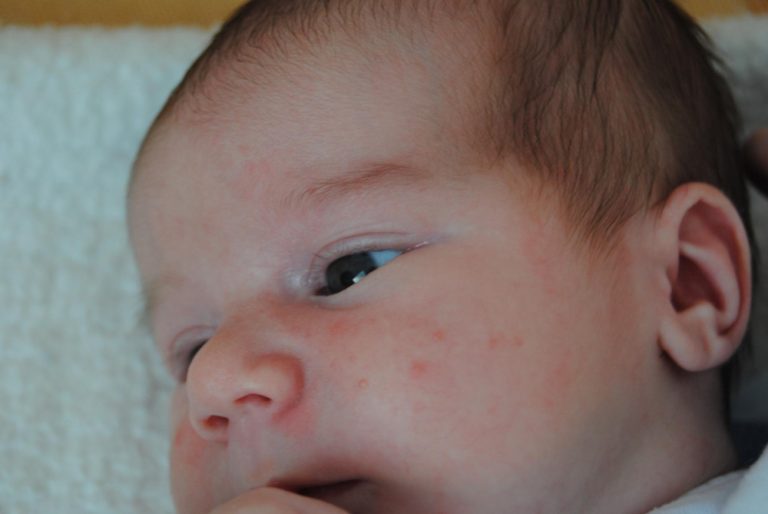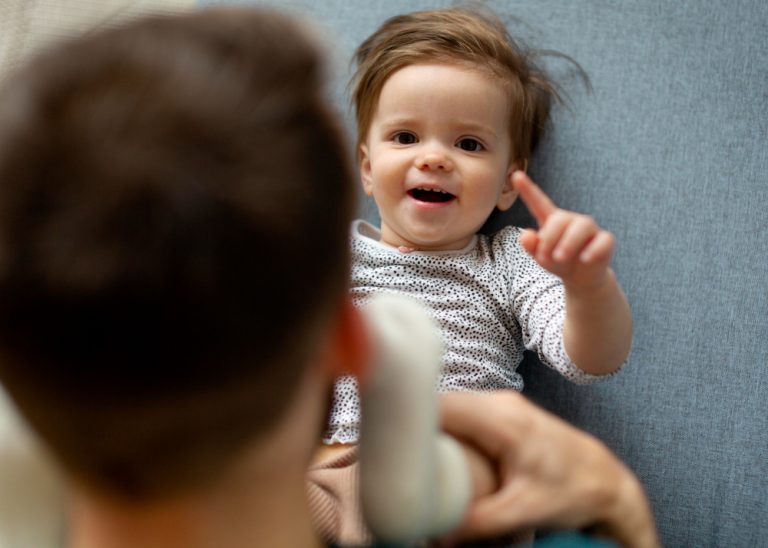Babinski Reflex in Babies: A Comprehensive Guide for Parents
Have you ever noticed your baby’s toes fan out, and the big toe lifts upward when the bottom of the foot is gently stroked? This intriguing response is known as the Babinski reflex, a key indicator of neurological development in infants that healthcare professionals closely observe during pediatric assessments. As a parent, understanding the Babinski reflex in babies can provide valuable insights into your baby’s motor skills and overall well-being.
In our comprehensive guide, we delve into the significance of the Babinski reflex, shedding light on its role in early motor skill development and how it is evaluated by healthcare professionals.
From the basics of newborn reflexes to the implications of the Babinski sign, we aim to equip you with the knowledge needed to monitor your baby’s neurological milestones effectively.
Join us on this journey to solve the mysteries behind your baby’s involuntary muscle responses and gain a deeper understanding of the Babinski reflex’s importance in your child’s developmental journey.
Overview of Babinski Reflex
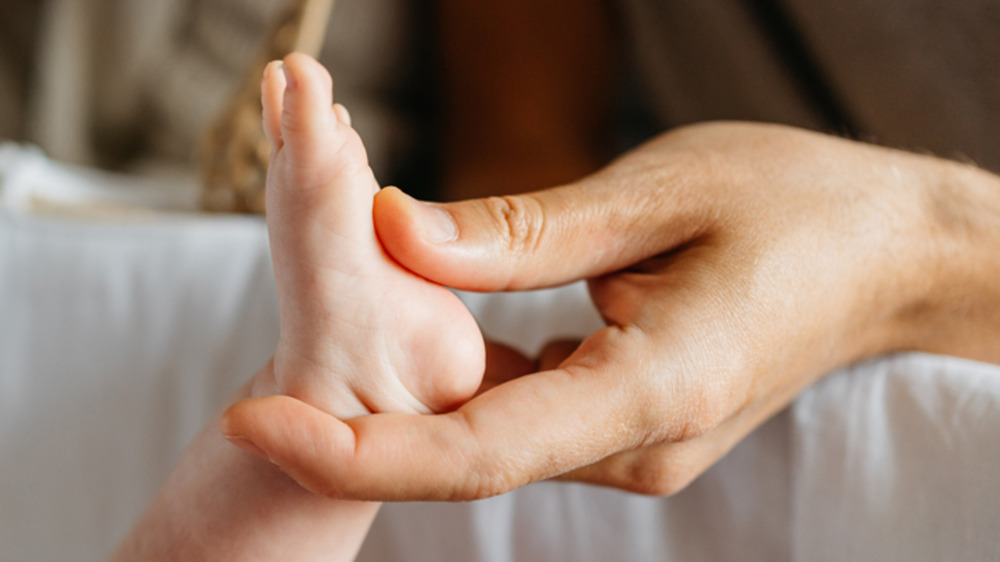
The Babinski reflex, also known as the plantar reflex, is a neurological response seen in infants that involves the movement of the toes when the sole of the foot is stimulated. This reflex is part of a group of newborn reflexes that emerge during early development.
When the sole of a baby’s foot is stroked, the normal response is for the toes to curl inwards or flex. However, in the Babinski reflex, the big toe moves upward, and the other toes fan out, resembling the shape of a fan. This response is considered abnormal in individuals above a certain age, as it indicates the presence of a neurological issue.
The Babinski reflex is of particular interest to healthcare professionals during pediatric examinations as it serves as a marker for assessing the integrity of the upper motor neuron system. It helps in determining the presence of any dysfunction or damage in the central nervous system, especially the brain and spinal cord.
Healthcare providers perform the Babinski reflex test by using the dull point of a reflex hammer to stimulate the lateral plantar aspect of the foot. This stimulation elicits a motor response in the muscles of the foot, which helps in evaluating the integrity of the descending fiber tract and the upper motor neuron function.
Understanding the Babinski reflex is essential for healthcare professionals and parents alike. It provides valuable insights into the neurological development of infants and can help identify any abnormalities that may require further evaluation and intervention.
In conclusion, the Babinski reflex is a characteristic response observed in infants when the sole of their foot is stimulated. Healthcare professionals closely evaluate this reflex as part of neurological examinations to assess the integrity of the upper motor neuron system.
By understanding this reflex, parents and healthcare providers can monitor a child’s neurological development and address any concerns that may arise.
Signs and Mechanism of Babinski Reflex
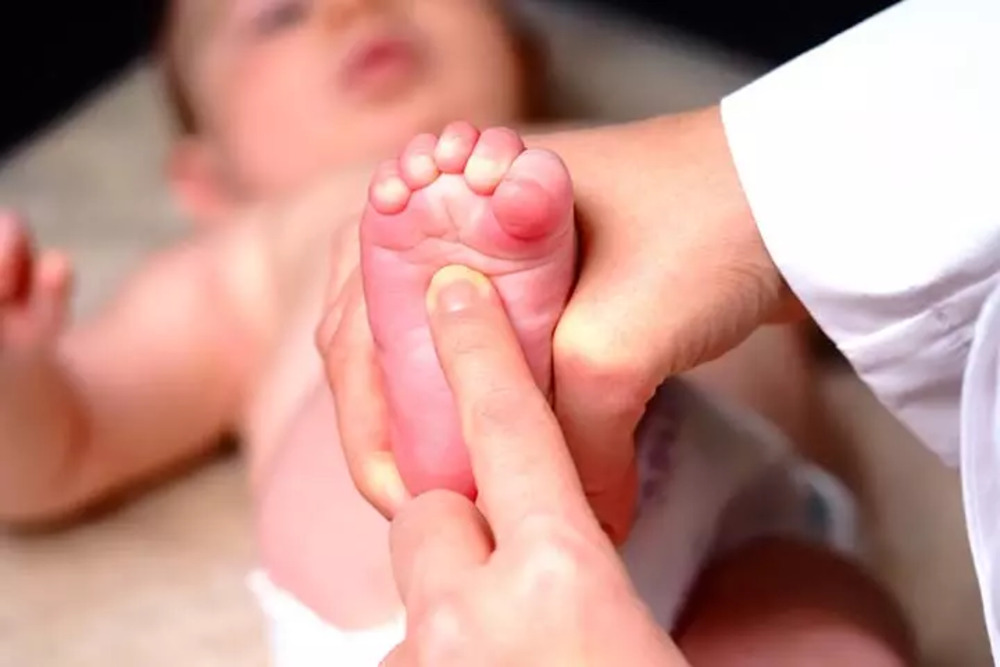
The Babinski reflex, also known as the plantar reflex, is a natural reflex that occurs in infants when the sole of their foot is stimulated. This reflex is characterized by the extension and fanning out of the toes instead of the normal curling or flexion response seen in adults.
When a healthcare professional gently strokes the lateral part of a baby’s foot, they observe for the presence or absence of the Babinski reflex. A positive Babinski reflex is indicated by the toes extending upwards and the big toe moving upwards and away from the other toes.
The Babinski reflex is a significant indicator of the development and integrity of the central nervous system, particularly the upper motor neurons. In infants, this reflex is usually observed up to the age of 1 to 2 years, after which it gradually disappears.
The appearance or persistence of the Babinski reflex beyond the expected age range may indicate an abnormality in the central nervous system and should be further evaluated by a healthcare professional.
The mechanism behind the Babinski reflex involves the interaction between the descending motor pathways from the cerebral cortex and the spinal cord. In adults, these pathways inhibit the extension of the toes when the sole of the foot is stimulated.
However, in infants, the lack of myelination and maturation in the neural pathways leads to the abnormal response observed in the Babinski reflex.
Understanding the physical signs and underlying neurological mechanisms of the Babinski reflex is important for healthcare professionals when evaluating an infant’s neurodevelopment. By assessing this reflex, they can gather valuable information that contributes to the overall assessment of the baby’s neurological well-being.
Remember, the Babinski reflex is just one component of a comprehensive pediatric examination, and healthcare professionals consider various factors and reflexes to understand the complete picture of an infant’s neurological health.
Evaluation and Interpretation of Babinski Reflex

The evaluation and interpretation of the Babinski reflex in infants play a crucial role in assessing neurological development and potential motor abnormalities. Healthcare professionals employ specific techniques to evaluate this reflex, gathering valuable insights into the functioning of the central nervous system.
Clinical Evaluation
- During a pediatric examination, a healthcare professional stimulates the sole of the infant’s foot with a dull point of a reflex hammer or by gently stroking the foot from the heel towards the toes.
- The presence or absence of a Babinski reflex is carefully observed and interpreted.
Interpretation of Responses
- A normal Babinski reflex response is characterized by the fanning out of the toes and extension of the big toe while the other toes flex.
- This response reflects the integrity of the spinal cord, the corticospinal tract, and the descending fiber tracts that control voluntary movement.
Abnormal Responses
- In older children and adults, an abnormal Babinski reflex, known as a positive Babinski sign, can indicate dysfunction in the central nervous system.
- In infants, however, it is considered a normal response until they reach a certain stage of neurological development.
- An absent or abnormal Babinski reflex in infants may be a significant indicator of an upper motor neuron lesion.
Variations and Further Assessment
- Healthcare professionals also consider variations of the Babinski sign and may perform additional tests to gain a comprehensive understanding of the infant’s neurological status.
- These tests may include assessing other newborn reflexes and conducting further examinations to rule out any associated neurological deficits.
The evaluation and interpretation of the Babinski reflex not only help healthcare professionals assess the infant’s neurological development but also provide valuable information for parents to monitor their baby’s overall health and well-being.
Clinical Significance
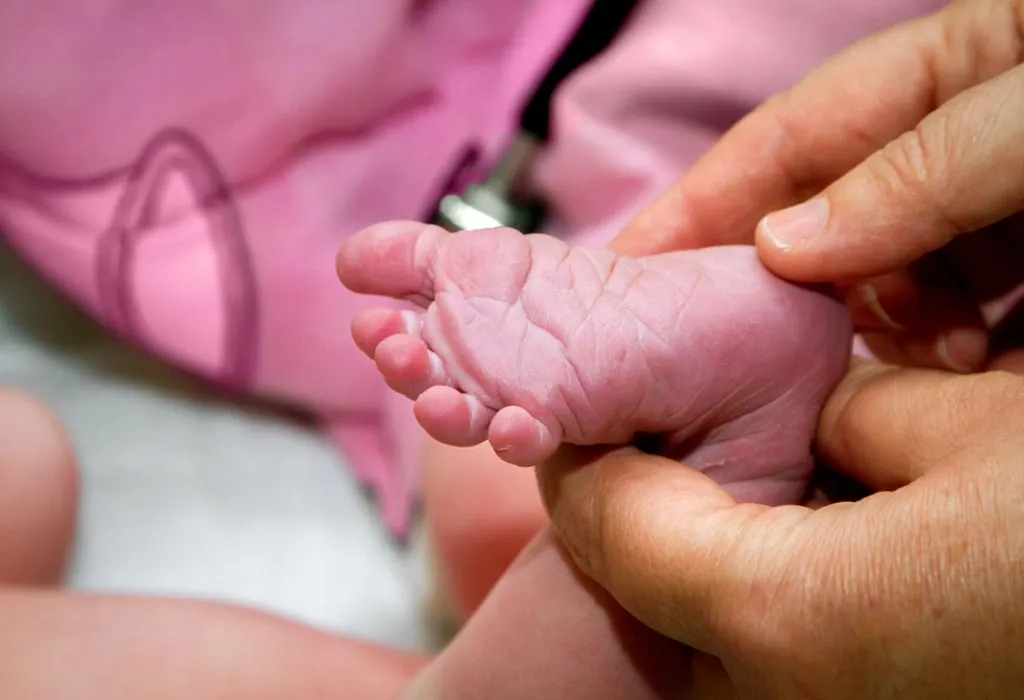
The Babinski reflex, also known as the plantar reflex, holds significant clinical importance. Healthcare professionals closely evaluate the Babinski reflex, particularly in infants, as it can provide valuable insights into the neurological development and potential abnormalities.
Abnormal responses of the Babinski reflex indicate an upper motor neuron lesion, which can help diagnose various neurological conditions.
When assessing the Babinski reflex in infants, the healthcare provider stimulates the sole of the foot, causing the toes to either flex normally or extend upward, resulting in a positive Babinski reflex.
However, if the toes fan out and the big toe extends upward instead of flexing, it suggests an abnormal response known as the Babinski sign. This abnormal response indicates an underlying issue with the central nervous system, such as damage to the spinal cord or brain.
The presence of a Babinski sign may necessitate further evaluation to identify the cause and determine appropriate treatment plans. It is crucial to assess the reflex alongside other neurological assessments to understand the full clinical picture.
In infants, an abnormal Babinski reflex can be an early indication of conditions such as cerebral palsy, spinal cord injury, or even brain tumors.
Healthcare professionals can use the Babinski reflex as a diagnostic tool to evaluate the integrity of the upper motor neuron system. By determining the presence or absence of the Babinski sign, they can assess the functioning of the descending fiber tracts and identify any potential abnormalities or deficits.
In conclusion, abnormal Babinski reflex responses have significant clinical implications. The presence of a Babinski sign may warrant further evaluation and monitoring to ensure the well-being of the infant.
Healthcare professionals play a crucial role in utilizing the Babinski reflex as an important sign to diagnose and manage various neurological conditions.
Enhancing Parent Understanding
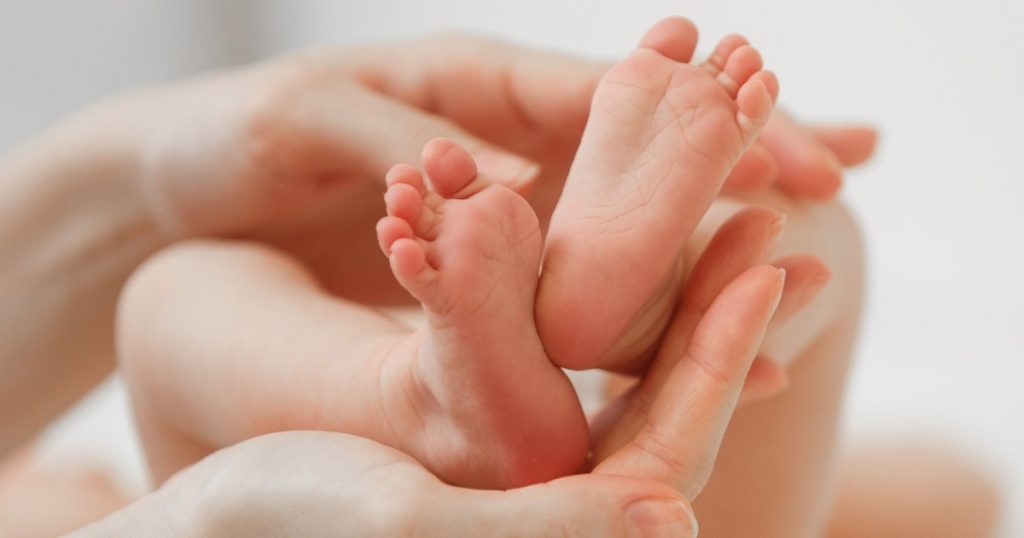
As a parent, it is essential to have a clear understanding of your baby’s Babinski reflex and its significance in their neurological development. By being aware of how this reflex is assessed and monitored, you can play an active role in supporting your child’s motor skill development.
Here are some tips and information to enhance your understanding of the Babinski reflex:
Observing the Reflex
- Take note of your baby’s foot response
Gently stroke the sole of their foot, starting from the heel and moving towards the toes. Observe their reaction.
- Normal response
In infants up to 1 year old, a normal Babinski reflex is characterized by the upward movement of the big toe and fanning of the other toes.
- Transient or permanent absence
It’s important to remember that the Babinski reflex can be transiently absent in newborns or permanently absent in older children and adults.
Understanding Developmental Milestones
- Connect the dots
The presence or absence of the Babinski reflex can provide insights into your baby’s overall motor development.
- Integration with other reflexes
The Babinski reflex is part of a complex interplay of newborn reflexes that gradually integrate and disappear as your baby grows.
Consulting with Healthcare Professionals
- Communicate with your pediatrician
If you have any concerns about the Babinski reflex or your baby’s motor development, discuss them with your healthcare provider.
- Consideration of individual variations
While most babies exhibit a typical Babinski reflex, healthcare professionals are trained to recognize variations and assess overall developmental milestones.
Being aware of the Babinski reflex and its role in early motor development empowers you to actively engage in your baby’s health and well-being. By staying informed and partnering with your healthcare team, you can promote a solid foundation for your child’s future movements and milestones.
What are Newborn Reflexes?

Newborn reflexes are innate automatic motor responses that babies exhibit in response to specific stimuli. These reflexes serve as important indicators of a baby’s neurological development and are essential for their survival and early motor skill development.
- Rooting reflex
When a baby’s cheek is gently touched, they will turn their head towards the stimulus and open their mouth in preparation for feeding. This reflex helps them locate the nipple for breastfeeding.
- Moro reflex
Often referred to as the startle reflex, this reflex is triggered by a sudden change in the baby’s position or a loud noise. In response, the baby will extend their arms outward with their fingers spread wide, followed by a quick inward movement. This reflex helps prepare the baby for grappling onto their caregiver for support or protection.
- Tonic neck reflex
When a baby’s head is turned to one side, the arm and leg on that side will extend, while the limbs on the opposite side will flex. This reflex allows babies to explore their environment by reaching and grasping objects.
- Palmar grasp reflex
When an object is placed in a baby’s palm or fingers, they will automatically close their hand around it. This reflex enables babies to hold onto objects and initiate early hand-eye coordination.
- Plantar reflex
When the sole of a baby’s foot is stroked gently, their toes will fan out and curl back in. This reflex helps babies develop balance and coordination in their lower limbs.
Understanding these newborn reflexes is crucial as they provide valuable information about a baby’s neurological health and development. Healthcare professionals closely observe these reflexes during routine evaluations to ensure that they are present and appropriately integrated into the baby’s motor skills repertoire.
As the baby grows, these reflexes gradually disappear, making way for voluntary movements that are controlled by the baby’s growing nervous system.
By monitoring and understanding these reflexes, parents can gain insights into their baby’s early neurological development and ensure they are reaching the crucial milestones.
Development and Disappearance of Newborn Reflexes

Newborn reflexes play a crucial role in early neurological development. These involuntary muscle responses emerge shortly after birth and gradually disappear as the baby grows and develops. Understanding the timeline of newborn reflexes can help parents track their baby’s motor development and identify any potential concerns.
Emergence of Newborn Reflexes
- Newborn reflexes typically appear in the first few weeks of life.
- Some reflexes, such as the Moro reflex and the tonic neck reflex, are present from birth, while others, like the Babinski reflex, may take a little longer to develop fully.
- These reflexes are controlled by the baby’s brainstem and spinal cord, as the connections to the cerebral cortex are still developing.
Disappearance of Newborn Reflexes
- As the baby’s nervous system matures, the reflexes gradually fade away, allowing voluntary motor control to take over.
- The disappearance of these reflexes is considered a positive sign of neurological development.
- By around 3 to 6 months of age, most of the newborn reflexes should have disappeared or become less pronounced.
It’s important to note that the exact timeline for the disappearance of newborn reflexes can vary from baby to baby. Some reflexes may persist longer in certain infants, while others may disappear earlier. If you have concerns about your baby’s reflexes, consult your pediatrician for a comprehensive evaluation.
Monitoring your baby’s reflexes, including the Babinski reflex, can provide valuable insights into their motor development. Always remember that newborn reflexes are a normal part of their early development, and their disappearance signifies healthy progression.
The Final Note: Babinski Reflex in Babies
In conclusion, understanding the Babinski reflex is crucial for parents to monitor their baby’s neurological development. The Babinski reflex is a normal reflex in infants that involves the extension and fanning out of the toes when the sole of the foot is stroked. This reflex is an important indicator of maturing upper motor neuron pathways in the brain and spinal cord.
During pediatric examinations, healthcare professionals carefully evaluate the Babinski reflex as part of a comprehensive assessment of a baby’s neurological health.
Abnormal responses, such as persistence of the reflex beyond the expected age or an asymmetric response, may suggest underlying neurological issues that require further evaluation and treatment.
As with other newborn reflexes, the Babinski reflex typically emerges in the first few months of life and gradually disappears by the age of one. It is important for parents to be aware of the normal developmental milestones and signs of abnormal reflexes.
Regular check-ups with a pediatrician or healthcare provider can help monitor the baby’s reflexes and overall neurological health.
In addition to the Babinski reflex, there are other reflexes that are commonly observed in newborns, such as the Moro reflex, Tonic neck reflex, Stepping reflex, and Grasping reflex. These reflexes serve important functions in early motor skill development and neurological maturation.
By understanding the significance of the Babinski reflex and other newborn reflexes, parents can actively participate in their baby’s healthcare and contribute to their overall well-being. Staying informed and maintaining open communication with the healthcare team can ensure early detection of any potential issues and prompt intervention when necessary.
Remember, if you have any concerns about your baby’s reflexes or neurological development, it is always best to consult with a healthcare professional for guidance and support.
Stay tuned for more informative articles on newborn reflexes and their role in your baby’s early development.




